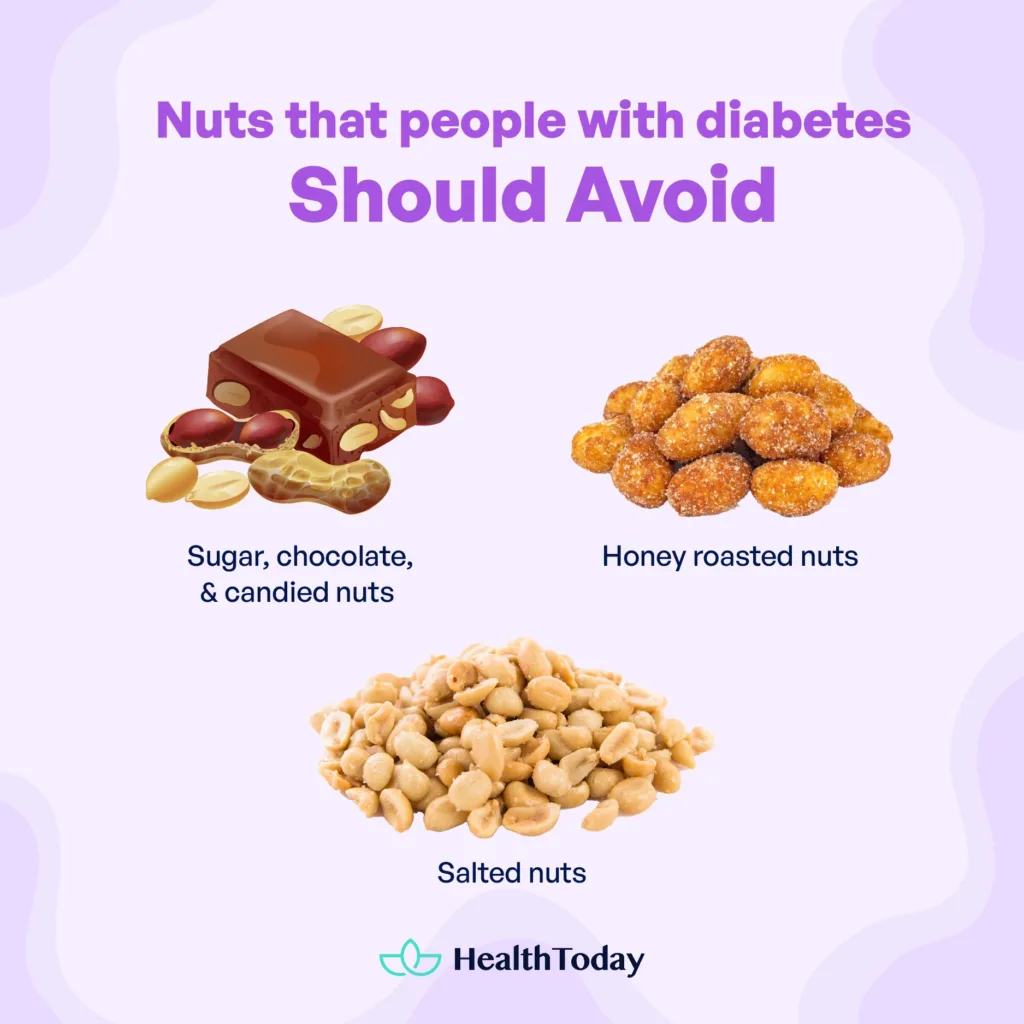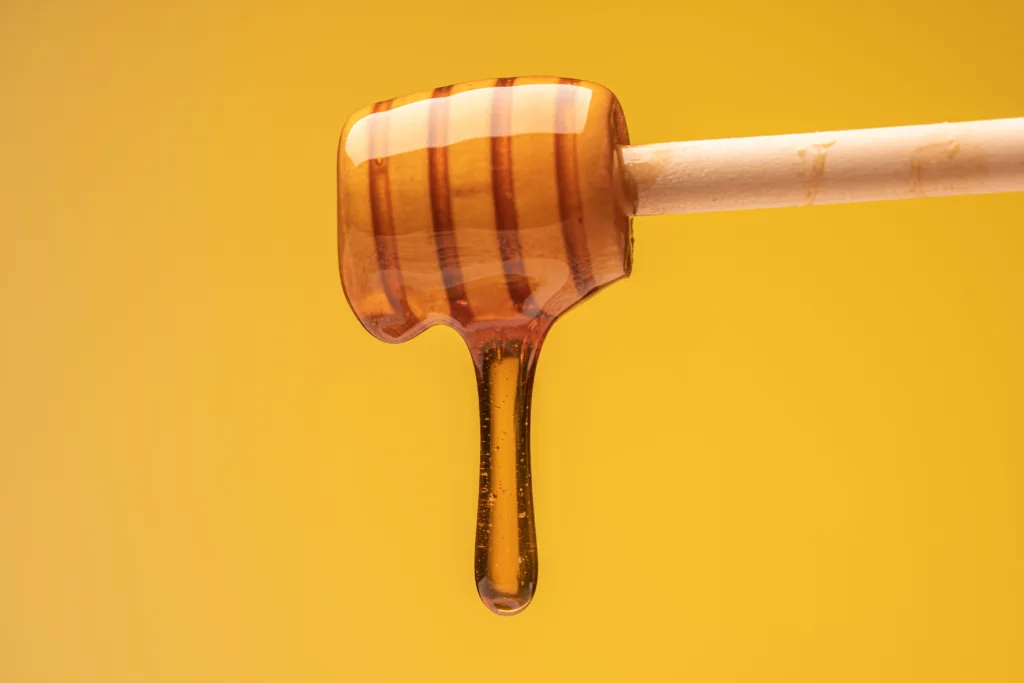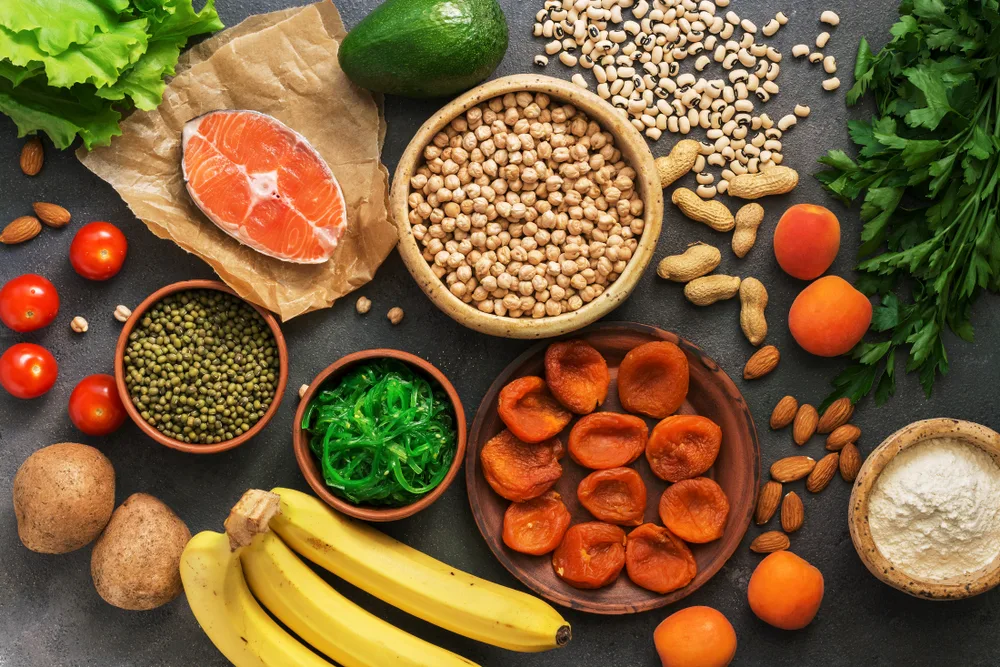Table of Contents
Exploring the relationship between peanuts and diabetes reveals a complex interplay of benefits and risks. Peanuts, often touted for their nutritional value, pose questions for those managing diabetes. Some questions have been asked include “Are peanuts good for diabetes?” and “Do peanuts raise blood sugar?”.
This article delves into the relationship, exploring the optimal ways to incorporate them while maintaining stable blood sugar levels.
Are peanuts good for diabetes?
Nuts, both tree nuts and peanuts, are considered densely packed with nutrients. They contain valuable nutrients like healthy fats, fiber, vitamins, minerals, and bioactive components. Some well-known nuts include walnuts, almonds, hazelnuts, pistachios, macadamias, and cashews. Peanuts, although classified as a legume, are often grouped with nuts due to their nutritional similarity to tree nuts. As their reputation as a go-to snack grows, so does the interest in how they affect blood sugar levels.
Peanuts glycemic index
The glycemic index categorizes foods based on how quickly they cause blood sugar levels to rise after consumption. Peanuts have low GI, which varies around 7 to 23 depending on the types (1, 2, 3). This makes them a potentially favorable choice for those with diabetes who need to manage their blood sugar levels.
The low glycemic index of peanuts can be attributed to their composition. Peanuts are rich in complex carbohydrates, dietary fiber, proteins, and healthy fats. These components work together to slow down the release of glucose into the blood, thus preventing sudden rises in blood sugar levels (4, 5, 6).
Do peanuts raise blood sugar?
The impact of peanuts on blood sugar levels is often discussed among individuals with diabetes or those keen on maintaining stable glucose levels. Natural peanuts are considered to be a low glycemic index food. This indicates that they are digested and absorbed at a slower rate, which means these foods tend to cause only modest increases in blood sugar levels rather than a sharp spike. (7, 8)
Although peanuts are generally safe for diabetes, it’s important to remember that individual responses can vary. Portion control is crucial; consuming excessive amounts of peanuts, just like any food, could lead to an elevation in blood sugar levels.
Peanuts and diabetes type 2
Peanuts are usually said to positively affect human health, including for people with diabetes. Several studies have also suggested peanut consumption may decrease the risk of diabetes and lower glycemic response after meals (9, 10, 11).
Despite having a low glycemic index, peanuts contain components that contribute to this benefit. They contain fibers and magnesium, which may help lower the need for insulin and increase insulin sensitivity, leading to a lower risk of type 2 diabetes (12, 13, 14). Peanuts also contain specific types of fatty acids – arachidic, behenic, and lignoceric acids – that have been linked with lower risks of diabetes (15, 16).
Other health benefits of peanuts
Peanuts could provide extra health advantages beyond their essential nutritional value. They provide essential nutrients, including specific fatty acids, folate, minerals like manganese and magnesium, and antioxidants like flavonoids and resveratrol (17). These components have a protective effect against heart issues (18, 19).
Several studies suggested that consuming peanuts can lower blood cholesterol levels by increasing the high-density lipoprotein (HDL) cholesterol (20, 21). They are also suggested to increase the sense of fullness, potentially reducing overall calorie intake and helping maintain a healthy weight (22).
Due to the high fiber, vitamin E, and antioxidant content, peanuts might contribute to lowering the risk of colorectal cancers and other cancers as well (23, 24, 25). Those components help regulate cell growth and fight against cancer, thus reducing cancer development.
Can diabetics eat peanut butter?
Peanut butter is one of the most popular peanut products. As it’s enjoyed by many, the questions of “Can diabetics have peanut butter?” or “Is peanut butter good for a diabetic?” are often addressed. Peanut butter contains a mix of fats, protein, and carbohydrates, making it a complex choice for those monitoring their blood sugar levels.
The concern regarding peanut butter’s impact on blood sugar stems from its carbohydrate content. However, peanut butter is relatively low in carbs. It also has a favorable GI, which means it doesn’t cause rapid spikes in blood sugar levels.
Some studies even showed the lowering effect of peanut butter consumption on blood glucose (26, 27). The fats and protein content can slow down the digestion and absorption of carbohydrates from other foods, potentially leading to a more controlled rise in blood sugar (28).
Although peanut butter may offer potential advantages for diabetics, moderation remains crucial. Overconsumption of peanut butter can lead to high-calorie intake due to its calorie density. This might impact weight management and blood sugar control.
Some brands also contain added sugars and unhealthy fats, warranting careful label reading for those with diabetes. Therefore, it’s recommended to measure portion sizes (2 tablespoons of peanut butter a week to avoid eating too many calories or fat) (29).
Diabetes and peanuts: What are the best ways to eat?
Understanding ways to include these nutrient-rich legumes into the diet can be effective in blood sugar management. The optimal ways to consume peanuts as part of a diabetic diet involve various factors. Here are some things that should be taken into consideration.
Opt for minimally processed nuts
There are several types of peanut products. Among them, some popular ones are dry roasted peanuts and peanut butter. Dry roasted peanuts offer a crunchy and flavorful alternative, while peanut butter offers a creamy taste and texture. But, considerations must be made regarding seasonings, such as sugars and oil. Those seasonings could impact blood sugar. Opting for unsalted and minimally processed varieties, like dry roasted peanuts, might mitigate potential risks.
Portion control and pairing
To optimize the benefits of peanuts for diabetes, it’s essential to balance portion sizes, frequency, and overall dietary composition. Consuming peanuts in controlled amounts can help prevent overconsumption, thus maintaining a balanced intake of calories and nutrients. Pairing peanuts with low-glycemic foods, rich in fiber and protein, can further contribute to stabilizing blood sugar levels.
A good example is the famous Dietary Approaches to Stop Hypertension Diet (or DASH), widely used for patients with higher heart disease risk. Because people with diabetes have chronic inflammation of their blood vessels, they also have a higher risk for heart disease and, therefore, would benefit from the DASH diet as well.
A recommendation of a sample 2000-calorie-a-day DASH diet, excerpted from Mayo Clinic, recommends 4 to 5 servings a week of nuts, seeds, or dry beans and peas. One serving is 1/3 cup nuts, 2 tablespoons peanut butter, 2 tablespoons seeds, or 1/2 cup cooked dried beans or peas (legumes)” (29).
Monitoring the impact on blood sugar
Individual responses to peanuts can vary. Because of that, it’s crucial for people with diabetes to monitor their blood sugar levels after consuming peanuts, including dry-roasted ones. Keeping track of these responses can help individuals understand how peanuts fit into their unique dietary plans.
Incorporating peanuts into meals and snacks
Beyond snacking, peanuts can be integrated into various dishes to add flavor, texture, and nutrition. Adding them to salads, yogurt, or whole-grain bread can provide a crunch and contribute to satiety without causing rapid spikes in blood sugar. Peanut butter, when chosen wisely, can also be used for spreading on whole-grain toast or as a dip for fresh fruits and vegetables.
Collaborating with healthcare professionals
When determining the best ways to eat peanuts as part of a diet, seeking guidance from healthcare professionals is paramount. Dietitians or healthcare can offer tailored advice based on an individual’s health status, dietary preferences, and blood sugar management goals.
Do nuts raise blood sugar? Which nuts people with diabetes should avoid?

Nuts generally have minimal impact on blood sugar levels due to their low carbohydrate, high fiber, and healthy fat content. Many nuts contain low GI, which means they cause a gradual and slow rise in blood sugar (30). However, not all nuts are beneficial for people with diabetes.
Sugar, chocolate, and candied nuts should definitely be avoided when you have diabetes. They contain added sugars which can spike blood sugar levels. Honey-roasted nuts are no exception. They usually contain added sugars and unhealthy fats, which may be bad for people with diabetes. Another type of nuts to avoid is salted nuts. They contain high sodium, which can impact blood pressure and overall health (31). It’s best for people with diabetes to opt for unsweetened and unsalted nuts as part of a balanced diet.
How many peanuts should a diabetic eat?
The American Diabetes Association (ADA) suggests a daily intake of 25 g of peanuts for diabetic women and 38 g of peanuts for diabetic men. But, the appropriate amount of peanuts for a person with diabetes varies based on individual factors. This includes their diet, calorie needs, and blood sugar management goals.
Are boiled peanuts good for diabetes?
Boiled peanuts are as good as raw or roasted peanuts, as long as there aren’t additives added. However, as with any food, portion control remains important to prevent blood sugar spikes. Again, it is also recommended to take into account the other foods you eat as well. The total servings of nuts, seeds, or dry beans and peas should be around 4 to 5 servings per week, and 1 serving is about a handful of nuts, equal to 1 ounce (about 35 peanuts).
Are peanuts better than almonds for diabetes?
Both peanuts and almonds are suitable for people with diabetes due to their low GI values. But the difference comes down to preference. Peanuts are legumes with more carbohydrates, while almonds are tree nuts with healthy fats. It’s suggested to consult a professional to ensure what works best for each individual.
Are salted peanuts good for diabetics?
Salted peanuts should be avoided, and maybe for people with diabetes, due to their high sodium content. Too much sodium intake can have a negative effect on blood pressure and overall health. It’s better to opt for unsalted peanuts for individuals managing diabetes.
Can a diabetic eat peanuts at night?
Yes, people with diabetes can eat peanuts at night. However, some things to keep in mind are portion sizes, timing, and personal response. Pay attention to how eating peanuts at night affects your body and adjust accordingly.
Summary
So, to sum things up, are peanuts good for diabetes? Yes, peanuts can be beneficial for individuals with diabetes. They contain rich protein, dietary fiber, and healthy fats, which might help slow down the release of glucose in the blood. Some nuts that individuals with diabetes should avoid are sugar-coated, honey-roasted, salted, and flavored nuts. Portion control is crucial due to the peanut’s calorie density. Since the total servings of nuts, seeds, or dry beans and peas should be around 4 to 5 servings per week, it is also recommended to take into account the other foods you eat as well. It’s advisable to seek professional guidance before including peanuts in your diet.

















Comments
0